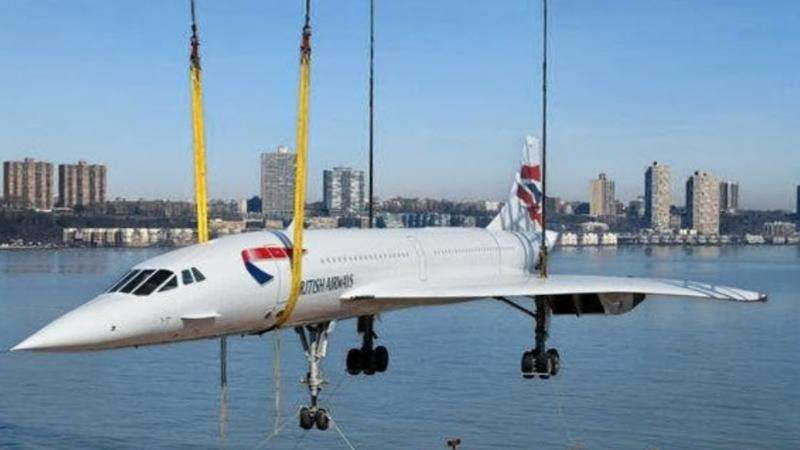Britain plans to resurrect and modernize the Concorde, creating a safer, larger jet with quieter engines and removing the need for the iconic drooped nose through new technology.
A new era of supersonic air travel is dawning almost two decades after the grounding of the legendary Concorde. By 2026, technology firms and aviation innovators suggest that passengers could once again experience commercial flights at over twice the speed of sound, drastically cutting long-haul travel times, Daily Dazzling Dawn realized.
This push to return to the skies is significantly bolstered by a pivotal policy change in the United States. In June 2025, an executive order, "Leading the World in Supersonic Flight," was signed, directing the Federal Aviation Administration (FAA) to repeal the decades-old prohibition on civilian supersonic flight over land. This legislation, intended to foster innovation and global competitiveness, is viewed as a crucial development that opens up vast new routes across North America and beyond, overcoming a major limitation that plagued the original jet.
The Original Concorde: A Marvel of Engineering-To understand the comeback, one must first look at the main features of the original Anglo-French icon. Concorde was a technological marvel that pioneered supersonic commercial flight:
Speed and Altitude: It cruised at a speed of Mach 2.04 (approximately 1,350 mph) at an impressive altitude of 60,000 feet, more than double that of conventional airliners.
Aerodynamics: The aircraft featured a distinctive ogival delta wing (a long, narrow, tailless triangle shape) and a slender fuselage, optimizing it for stable and efficient supersonic flight.
Unique Features: It used a 'droop nose' that could be hydraulically lowered for improved pilot visibility during takeoff, landing, and taxiing, as the high angle of attack required for low-speed flight would otherwise obscure the runway. It was also the first airliner to use an analogue fly-by-wire flight control system.
Thermal Management: Due to the extreme friction heating at Mach 2, the aluminium fuselage would stretch by up to 25 cm (about 10 inches) during flight, a challenge managed by its sophisticated design.
Enduring Problems and the Path to Modern Supersonic Travel
Despite its successes, the original Concorde faced a set of critical problems that ultimately led to its retirement:
The Sonic Boom: The aircraft generated a powerful, disruptive shockwave—the sonic boom—when breaking the sound barrier. This led to a ban on supersonic flight over land in many countries, severely restricting its economically viable routes almost exclusively to transatlantic crossings over water (e.g., London to New York/Paris).
Fuel Consumption and Cost: Concorde's four Rolls-Royce/Snecma Olympus turbojet engines were extremely fuel-intensive, consuming roughly twice the fuel per passenger-mile compared to subsonic jets, making the aircraft highly expensive to operate, particularly after the 1970s oil crises.
Noise and Pollution: Its powerful engines were notoriously noisy on takeoff and approach, leading to significant community opposition and limiting its access to some airports. Furthermore, concerns were raised about engine emissions at high altitudes and their potential impact on the ozone layer.
High Fares and Limited Market: Due to the high operating costs, ticket prices were unaffordable for the average traveller, limiting the market to time-sensitive premium travellers and the ultra-wealthy.
The Next Generation: FlyConcorde Ltd's Vision
The new supersonic comeback is being championed by companies like FlyConcorde Ltd, which is led by Dr. Pano Churchill, the great-grandson of Sir Winston Churchill. Their updated version, expected for a commercial launch as early as 2026, aims to overcome every major historical problem with modern technology:
Quiet Supersonic Flight: The new design incorporates groundbreaking noise-reduction technology, including a patented Sonic Boom Suppression system, to achieve a "quiet sonic boom" or "boomless cruise," thereby satisfying new regulations and making overland routes viable for the first time.
Sustainability and Efficiency: The new aircraft will be significantly more eco-friendly, engineered with advanced composite materials to make it approximately 50% lighter than its predecessor, drastically improving fuel efficiency. It will be powered by Sustainable Aviation Fuel (SAF), potentially cutting emissions by up to 80%. There are even ambitious claims that the new engines will be designed to create ozone instead of depleting it.
Performance: It will maintain the high-altitude cruising ability of the original, flying at up to 60,000 feet, and promises to slash travel times, with routes like London to New York potentially taking under four hours—and some reports even suggesting as little as two hours.
While a relaunch focused on sustainability, cutting-edge digital innovation, and safety is thrilling, travel experts remain pragmatic. The new supersonic jet is unlikely to appeal to the mass market. Instead, it is poised to create a unique niche for high-end, time-sensitive premium and business travellers, once again becoming the pinnacle of prestige flying for those willing to pay a premium for speed. The first commercial services are reportedly being timed to coincide with the 50th anniversary of Concorde’s maiden trans atlantic crossing in 1976.








.svg)




